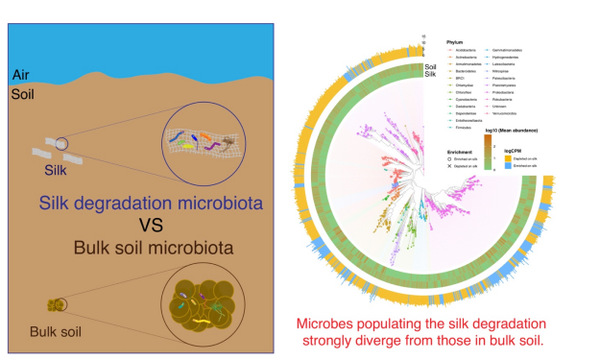Zhejiang University: Microbial community composition deciphered during silk degradation in burial environment
Recently the research team led by HU Yulan and ZHANG Bingjian at the Zhejiang University Department of Archaeology, Cultural Heritage and Museology published a research article entitled “Dynamics of microbial community composition during degradation of silks in burial environment” in Science of the Total Environment.
Silk residues in the soil form a unique niche termed as “silksphere.” HU Yulan and ZHANG Bingjian put forward a hypothesis that microbiota in the silksphere are of immense archaeological and conservation value as a biomarker for unraveling the degradation of ancient silk textiles. To test this hypothesis, they monitored the dynamics of microbial community composition in the process of silk degradation via both the indoor soil microcosmos model and the outdoor environment, and obtained a total of 82,843 amplicon sequence variants (ASVs). Microbial community divergence was evaluated with Welch two sample t-test, principal co-ordinates analysis (PCoA), the negative binomial generalized log-linear model and clustering, etc. Differences in community assembly mechanism between the silksphere and bulk soil microbiota were compared with the dissimilarity-overlap curve (DOC) model, the neutral model and the null model. The random forest (RF), a well-established machine learning algorithm, was also applied to screening the potential biomarkers of silk degradation.
The findings revealed that the vast majority of microbes populating the silksphere diverged significantly from those in bulk soil. Certain microbial flora could serve as an indicator of silk degradation. This opens up a new avenue for the identification of archaeological silk residues through the dynamics of microbial communities.

